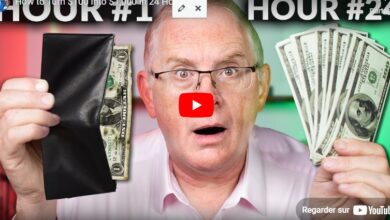Sponsored posts: How to create effective sponsored content
If you’re tired of reading generic advice on how to create effective sponsored content, you’re in the right place.
You already know that the first step for creating sponsored posts is to know your audience. There’s no need to repeat it. It’s time to expand your knowledge into something more actionable.
In this comprehensive guide about sponsored posts, you’ll learn best practices, discover strategies, get resources and find inspiration for your social media campaigns.
What are sponsored posts?
A sponsored post is a piece of content used as an advertisement in any of the major social media networks to increase your brand exposure by targeting a specific audience. Sponsored posts look like native content on the social network, blending with organic content in the user’s feed.
There are two different sponsored posts, which are:
- Promoted or boosted posts: Amplifies the reach of your content by paying the platform to “boost” the post’s visibility to a larger audience.
- Paid sponsorships or paid partnerships: Promotes your brand through a creator or influencer’s account on their social network(s). Their audience will see a post similar to organic content, except it will be tagged or indicate in the copy that it’s being sponsored by a brand.
With sponsored content, you can create a better experience for your audience by leveraging these less intrusive ads for your influencer and paid social strategies. Plus, sponsored posts expand your reach by tapping into new audiences.
Tips for creating effective sponsored posts
Whether you’re a small business trying to put your name out there or an established brand seeking to boost engagement, here are some tips to help you get on the right track.

Outline goals
This is one of the most difficult—but crucial—steps to get started with your sponsored content campaigns. That’s why you need a clear direction for what you want to achieve with your sponsored posts.
You can define specific campaign KPIs based on your target audience, past campaign performance and potential reach. To evaluate this potential reach, have in mind if you’ll be working with influencers or not.
Here are a couple of questions to help outline your goals:
- What are your business goals? Determine the overall business goals that you’re trying to achieve. If your leadership expects to generate leads or $$$ from social media marketing efforts, start breaking that down into smaller goals.
- What are your objectives? You know this one too well. Use the SMART goals framework to make sure your goals are attainable within a timeframe.
Set a budget
To figure out a budget for your sponsored posts, look at your social media marketing budget as a whole. Knowing how much you can spend helps you allocate your resources wisely. Download our custom budgeting spreadsheet to start outlining your expenses.
Remember, the money you spend on your social media strategy depends on the amount of sponsored content you want to incorporate. Or if you’re willing to work with influencers.
For sponsored content efforts, here’s what you need to consider:
- Define your strategy: Determine if you’re going to use sponsored posts for a single marketing channel or as a pillar of your social media strategy. Knowing this will allow you to determine the investment you need to make for sponsored content.
- Research the costs: The cost of sponsored posts is determined by your social media advertising strategy. These costs can involve creating new content, boosting existing content or hiring influencers. Have in mind that the cost of influencers varies, depending on their audience size (micro vs. celebrity), caliber of their influence, experience and more.
- Compare your budget with your expected ROI: Think of your budget as an investment. Naturally, your return on investment (ROI) should be suitable enough to justify the cost of your sponsored content.
Determine your ROI
The goals you outline can be translated into key metrics (think: reach, engagement and conversions) that calculate ROI.
In the case of sponsored posts, justifying your marketing budget based on likes and comments may seem like a difficult task. But ROI isn’t just measured by bottom-line profit.
You can measure ROI by money saved or used efficiently to expand reach, brand awareness or conversions (think: clicks to your website or sign-ups). However, through social shopping, you can impact the bottom line through direct sales or influencer endorsements (think: influencer discount codes).
Here’s our take on figuring out your ROI:
- Identify your metrics: Reach, engagement and conversion metrics are a good rule of thumb for your sponsored content.
- Track those metrics: Keep track of your sponsored post as soon as it is live. This will help you understand what content and which influencers are performing well.
- Communicate your key metrics to influencers: Make sure you tell influencers what metrics you want to track from the beginning so you can monitor performance and social media ROI efficiently.
Note: Focus on relevant metrics when measuring your sponsored post performance. Tracking too many metrics can distract you from your initial goals. More information isn’t the same as better information.
Create quality content
Sponsored posts can take on a variety of formats, such as videos, testimonials, infographics or static images. Regardless of the type, you can follow best practices to create effective posts.

The anatomy of high-performing sponsored content consists of:
- Addressing your target audience: You don’t have to directly mention your audience, but a slight reference to them can help capture their interest.
- Writing strong copy: Put yourself in your audience’s shoes by highlighting benefits or pain points they care about. What’s in it for your audience? Why should they be interested? The same applies to video scripts.
- Balanced design, visuals and colors: Make sure your sponsored post catches your audience’s eye while being true to your brand and the creator’s identity.
- A call-to-action: This is how you generate conversions. If you don’t tell your audience what action to take next, you’re losing opportunities.
Decide if you’re working with Influencers
Sponsored content doesn’t have to be paid partnerships. But influencers are a highly effective way to expand your reach and build trust. They’re experts in their niche with an engaged, loyal audience. So, if you partner with them to generate sponsored content, it’s likely some of that trust is going to rub off on you.
Here’s what you need to have in mind for your influencer marketing efforts:
- Find an influencer that belongs to the same niche you’re targeting. This ensures the influencer aligns with your target audience.
- Review your marketing budget to choose the right influencer for you. Influencer rates vary across platforms. But the more influence and followers they have, the more expensive their services will likely be.
- Make sure the influencer understands the message you want to transmit. You don’t want them to post something that doesn’t align with your brand values. Give clear directions but leave room for collaboration. Influencers are also content creators that want to stay true to their audience.
Use tools to look for influencers or do your own research on social media. They’ll usually have their contact info for paid collaborations on their profile.
Instagram sponsored posts
Sponsored posts on Instagram enable you to promote a post from your business profile or partner with an influencer for a paid sponsorship. Additionally, you can promote Instagram story ads.
Instagram sponsored posts have a “Sponsored” tag below your brand name and call-to-action buttons like “Shop now”, “Learn more” or “Sign up”.
This is what a promoted post on Instagram looks like:

For paid partnerships, sponsored posts on Instagram have a “Paid partnership” tag under the influencer’s name, and sometimes also lists your brand’s name.
This is what a paid partnership on Instagram looks like:

How to create a sponsored post on Instagram
To create a promoted post on Instagram, you’ll need to boost an existing post:
- Go to your profile and select the post you want to promote.
- Press the Boost post button.
- Select your goal (whether that be more profile visits, website visits or messages).
- Choose your target audience (it can be automatic or you can create your own).
- Set your Budget and Duration.
- Pay and you’re done.
To manage your Instagram advertising efforts and see how your sponsored post is performing, go to your profile, select your post and press on View insights or Ad insights. From there, you can view your engagement and goal metrics.
With paid partnerships, the influencer will create and post the content. It’s up to you to approve the influencer as a content creator associated with your brand. To achieve this, you:
- Go to your Settings and press Business.
- Select Branded content and then Approve content creators.
- Enter the username of the influencer you’re working with.
- Press the Approve button that’s next to their username.
With your approval, the influencer will be able to tag you as a business partner in their sponsored post. And you’ll be able to see the reach and engagement metrics from the influencer’s post.
Facebook promoted posts
Facebook only gives you the option to do promoted posts (no influencers here).
Facebook promoted posts have a “Sponsored” tag below the name of your brand and include a call-to-action button that can be “Shop now”, “Learn more” or “Sign up”.
This is what Facebook promoted posts look like:

How to create a promoted post on Facebook
These are the steps to create a promoted post on Facebook:
- Go to your Facebook page.
- Select the post that you want to promote and press Boost post.
- Choose a campaign goal based on the stages of Awareness, Consideration or Conversions.
- Select a recommended audience or create your own custom audience.
- Enter your Budget and Duration of the campaign.
- Pay and boost your post.
To view the results of your boosted post, you can go to your Facebook page, select Ad Center, choose your boosted post and press the View results option. The Ad Center lets you track all your paid posts, so you can see the performance of your entire Facebook advertising strategy.
TikTok sponsored posts
Sponsored TikTok posts have both promoted posts and paid partnerships as options for your TikTok ads.
Much like the others, a “Sponsored” tag appears below your brand’s name and the captions, along with a CTA button.
Here’s what promoted TikTok posts look like:

TikTok sponsored posts have a “Paid partnership” tag under the influencer’s username and captions.
Here’s what paid sponsorships on TikTok look like:

How to create a sponsored post on TikTok
Sponsored posts are just one of the many ways you can make money on TikTok. Since TikTok users are 1.4x more likely to research brands or products on the platform, these types of posts can be especially effective.
Here’s how you create promoted TikTok posts, assuming you already created the sponsored content and posted it on your account:
- Go to your Profile and tap on the three-line menu.
- Select Creator tools and then Promote.
- Pick the TikTok video you want to promote.
- Choose your goal: more video views, website visits, followers, messages or profile views.
- Choose your audience (it can be a default or custom audience).
- Set your Budget and Duration.
- Pay and start your promotion.
To monitor your post’s performance, go to your Profile, tap on the three-line menu, select Creator tools and check your Analytics.
On the paid partnership side, you can contact a TikTok influencer to collaborate with you by following these steps:
- Log into the TikTok Creator Marketplace.
- Click on Explore and use the filter to find TikTok creators that you want to reach out to.
- Select Create campaign and fill in your campaign details.
- Click on Upload Message to initiate contact with your chosen TikTok creators or influencers.
Later on, when you reach an agreement with an influencer and the sponsored TikTok post is live, you can check how your post is doing. For this, log into your TikTok Creator Marketplace account and click on Reporting to see your Campaigns, Views and Engagement rate.
LinkedIn promoted posts
For LinkedIn promoted posts, the format remains similar, with a predominant “Promoted” tag along with a CTA.

How to create a promoted post on LinkedIn
These are the steps you need to follow to create a LinkedIn ad:
- Sign in to the LinkedIn Campaign Manager.
- Select an objective from Awareness, Consideration or Conversions.
- Build your audience by selecting multiple attributes.
- Choose an Ad format.
- Set a Budget and a Schedule.
To manage the results of your sponsored content, go back to your LinkedIn Campaign Manager and click on the Performance Chart to see clicks, impressions, conversions, leads, the average cost per lead, etc. You can also click on Demographics and display information like job title, company, company size, location, country and more information about the people who have interacted with your ad.
Twitter promoted Tweets
Twitter promoted posts have a “Promoted” tag at the bottom left with a little arrow pointing upwards. Twitter doesn’t have defined CTA buttons, but once you press the ad, it redirects you to the associated landing page.
How to create promoted Tweets
This is how you create promoted Tweets for your Twitter advertising campaign:
- Go to Twitter’s ad platform.
- Input your Country/Region and Time zone.
- Choose your objective: Reach, Engagement, Followers or Website traffic.
- Write your ad text and add media.
- Select the demographics of your audience.
- Add targeting features like keywords your audience uses, followers of similar accounts and even their operating system.
- Set a Budget and Schedule.
- Add your payment method and launch your campaign.
To monitor the performance of your promoted Tweets, go to Twitter’s ad platform once again and click on Analytics. Then select Tweet activity to see the impressions, engagement, engagement rate, likes and other metrics for your Top and Promoted Tweets.
Boost your presence with sponsored content
Now that you leveled up your sponsored content knowledge, it’s time to explore how sponsored posts fit into your social media strategy.
As you test sponsored posts and learn what works best for you, also consider how they can be a part of your larger creator marketing strategy. Working with creators has become a must, so check out our article to learn how you should be integrating creators into your social strategy.
The post Sponsored posts: How to create effective sponsored content appeared first on Sprout Social.







